OpenSCAD-workshop-2018-02
Miscellaneous other functions
- The Incredibly useful Hull()
- Fast modelling of rotational objects
- Rounded boxes
- STL import
- Including libraries
The incredibly useful Hull()
/* This example is courtecy of iamwill
(https://cubehero.com/author/orangeroot/)
His blog post at [https://cubehero.com/2013/11/19/know-only-10-things-to-be-dangerous-in-openscad/]
is very good -- arnsteio
*/
union() {
sphere(r = 20);
cylinder(h = 30, r1 = 20, r2 = 0);
}
However, we want the radius of the cone to match up with the radius of the sphere at a given height we move up the cone. We can use sin and cos to figure that out. – iamwill
union() {
sphere(r = 20);
// See Will's post for extended explanation on the trigonometry
translate([0, 0, 20 * sin(30)])
cylinder(h = 30, r1 = 20 * cos(30), r2 = 0);
}
We can do that, and the code generated is beautiful. But I am lazy, and this gives almost the identical result:
hull() {
sphere(r = 20);
translate([0, 0, 40])
cube(0.01);
}
Our “Gothic Roof” is made this way - it has a hull() around a square at the base,
and the intersection between two squares at 45 degree angle to each other as the mid-roof “break”.
And another hull()around this mid-roof shape and a long, narrow square at the top of the model.
The whole, fully parametric and decorated roof design was made in 90 minutes.
Fast modelling of rotational objects
/* This demonstrates an easy way to model 6-sided towers
The code makes a 6-sided spire with a perfectly round hole ("window") in it.
- arnsteio, 2017
*/
$fn=6; // This is how our spire gets 6 sides
height=100;
width=20;
difference()
{
cylinder(h=height, d1=width, d2=0.01);
// In the next line we redefine $fn for this object to get a perfectly round hole
translate([0,height/2,height*0.2]) rotate([90,0,0])cylinder(h=height, d=width/3, $fn=50);
}
Rounded boxes
minkowski() does the Minkowski sum of child nodes - it adds all the constituent vectors together.

The Minkowski sum of a spoon and a star. Picture by Peter Hachenberger.
// Try doing the minkowski sum on this example
// by removing the commenting ahead of "minkowski()"!
// It is a very fast method of making a rounded box.
$fn=150;
//minkowski()
{
cube([10,10,1]);
sphere(r=2);
}
STL import
import("myfile.stl")
Including libraries
If you consider e.g. the customizable Klein bottle at https://www.thingiverse.com/thing:2170953, it is made possible by heavy use of bezier curves.
Instead of reimplementing them from scratch the author imports a bezier library he has published previously.
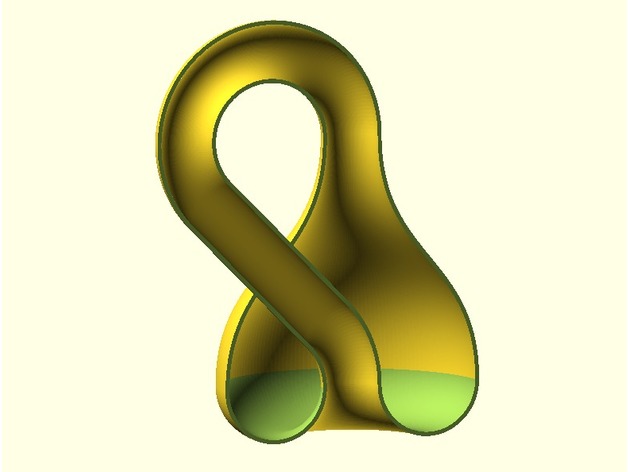 Half of the Klein bottle, by Gael Lafond
Half of the Klein bottle, by Gael Lafond
We can use his library bezier.scad to make e.g. the beginnings of a minaret:
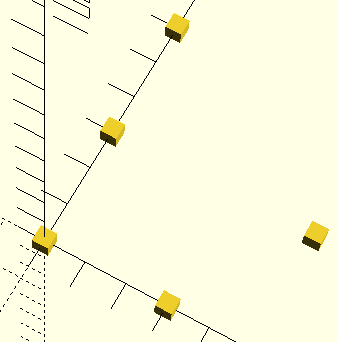 The points we give the bezier function
The points we give the bezier function
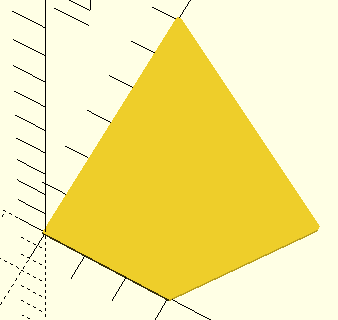 The graph we would have gotten via the hull() function on the same points
The graph we would have gotten via the hull() function on the same points
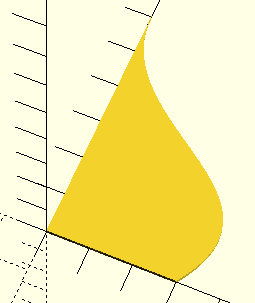 Curve delivered via bezier function
Curve delivered via bezier function
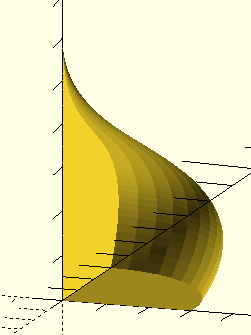 Rotating this curve through 90 degrees
Rotating this curve through 90 degrees
// Requires the bezier library by Gael Lafond:
// http://www.thingiverse.com/thing:2170645
include <bezier.scad>;
resolution = 50;
rotate_extrude($fn = resolution)
BezPolygon([
[[0, 0],[0, 0],[0, 0],[0, 0]],
[[30, 0],[50, 30],[0, 30],[0, 60]]
], resolution);